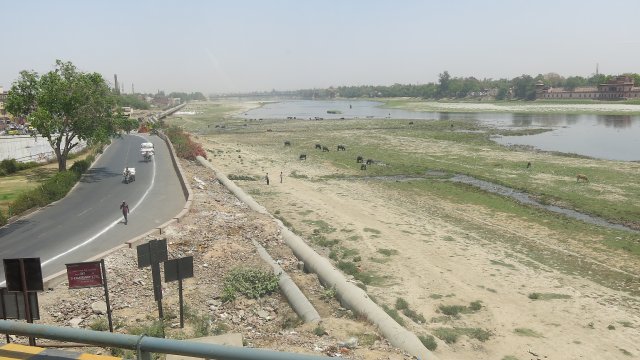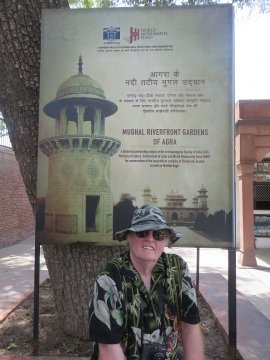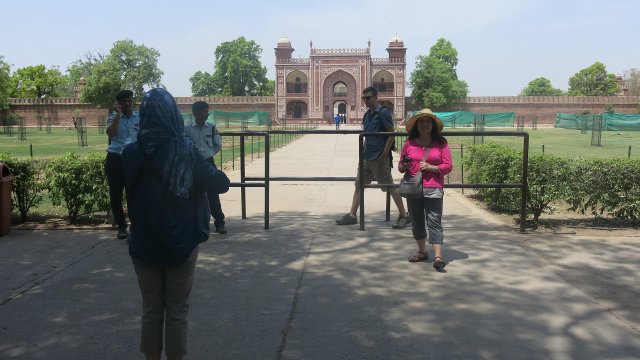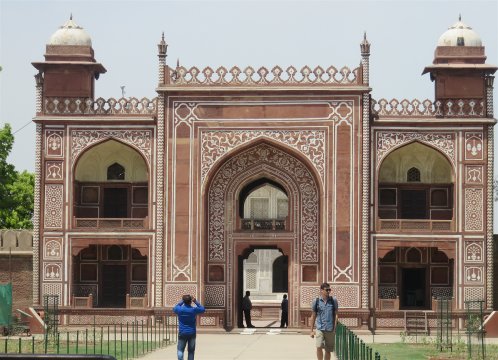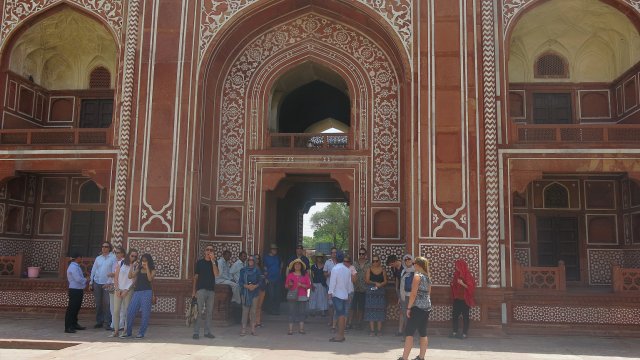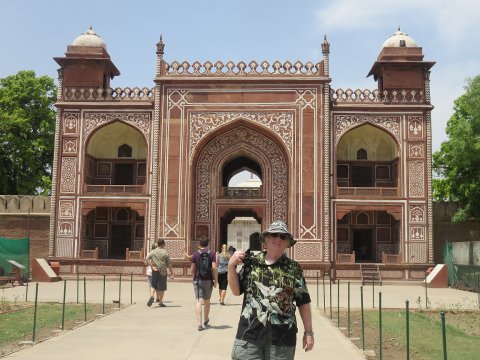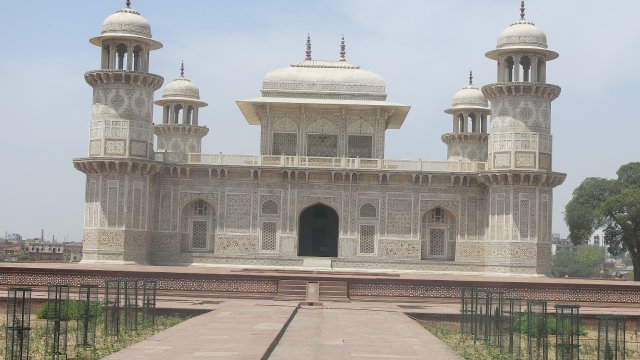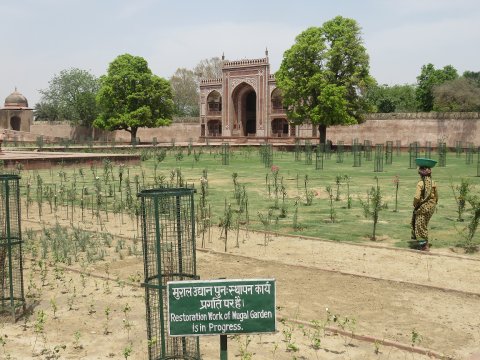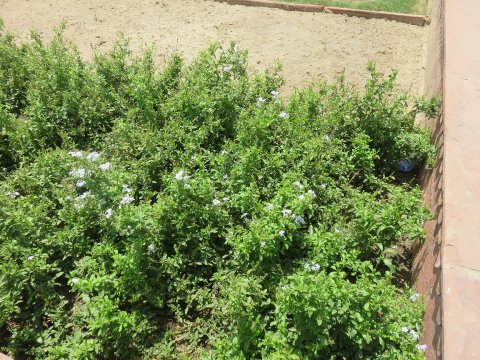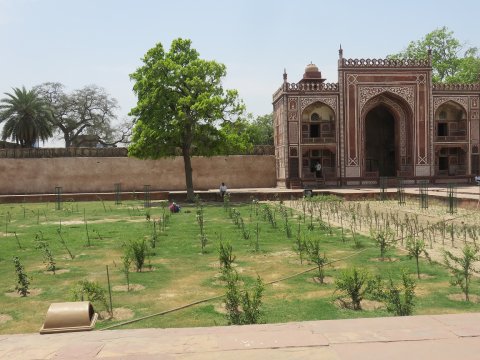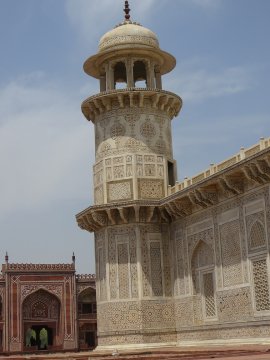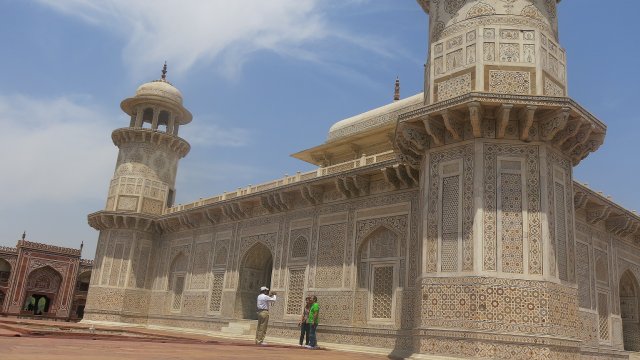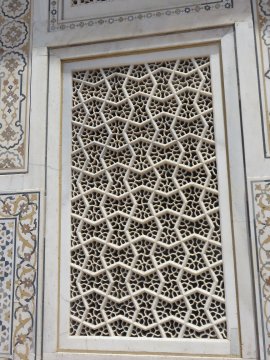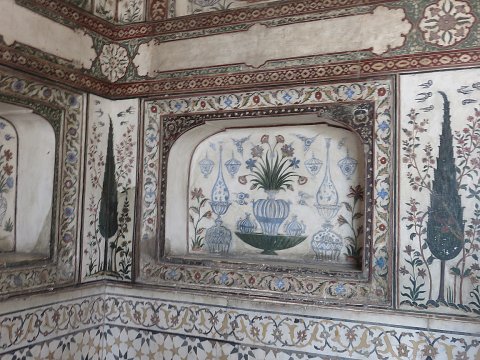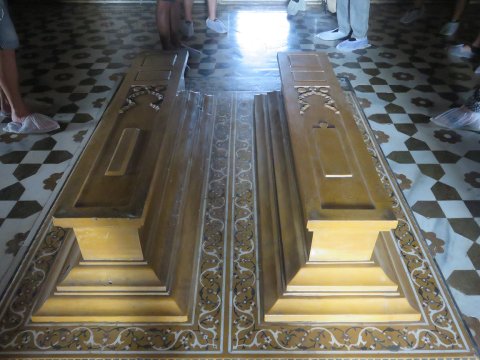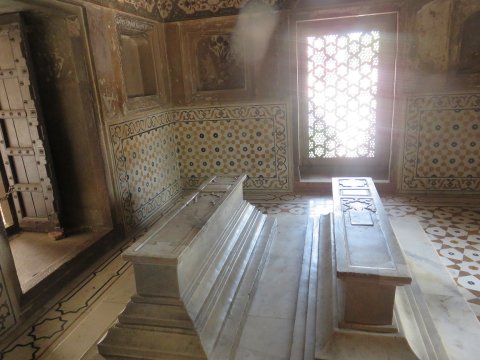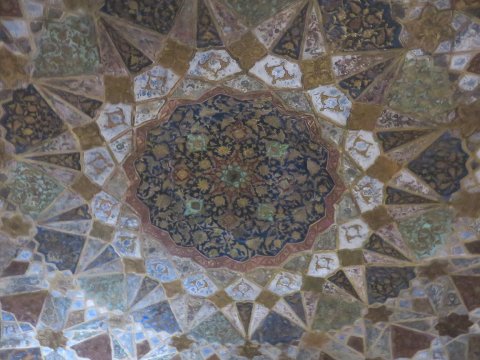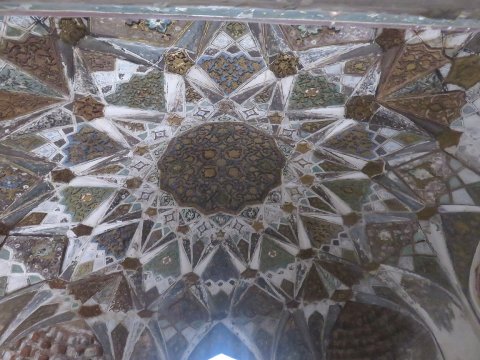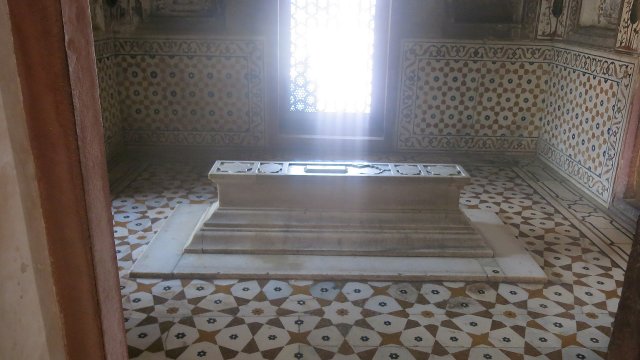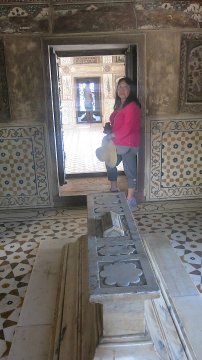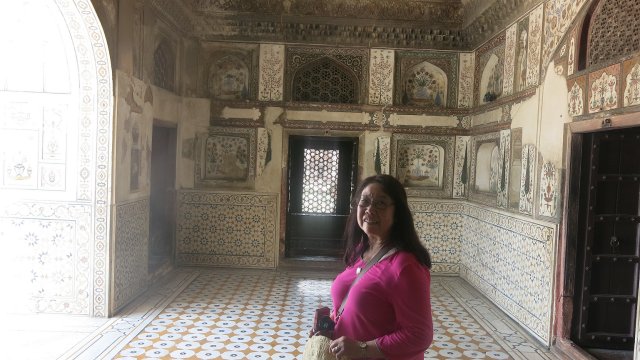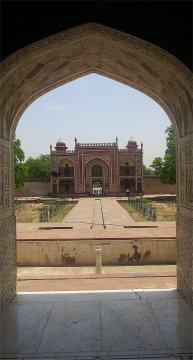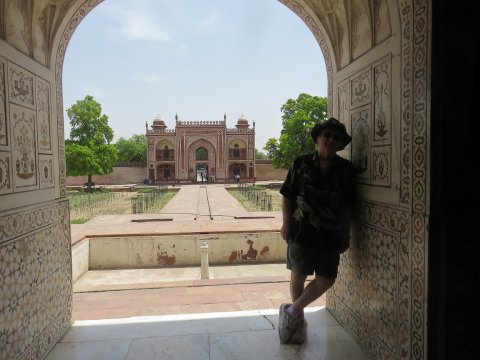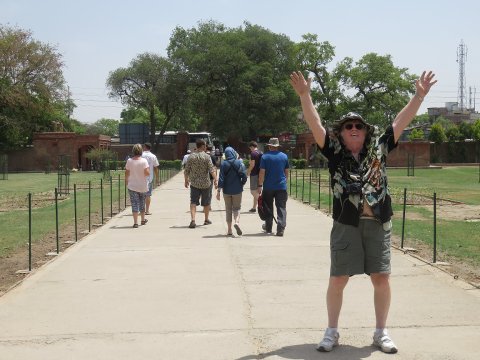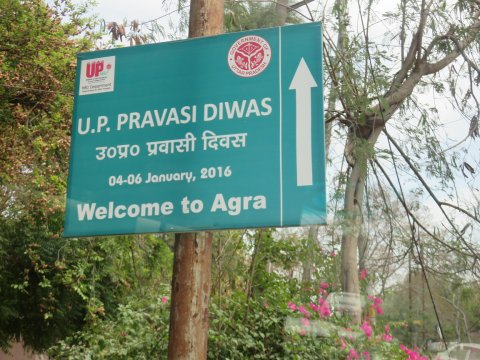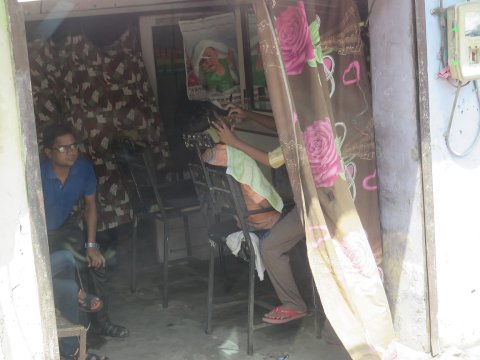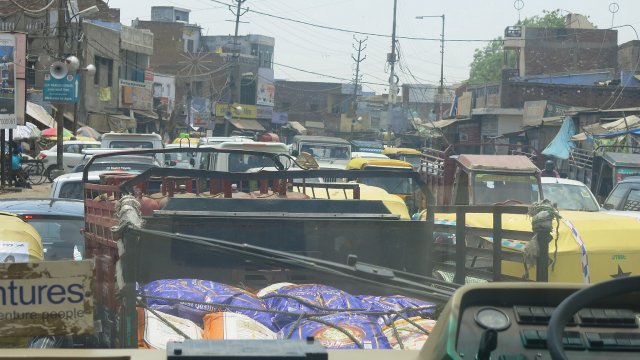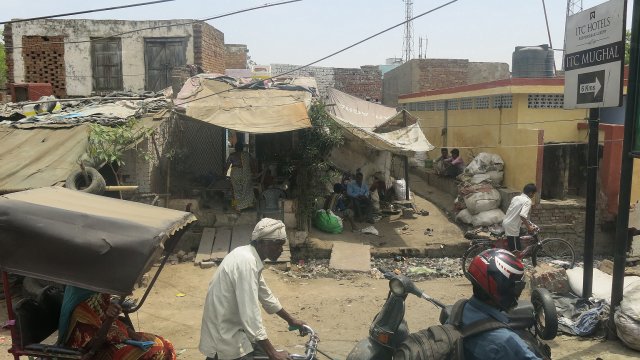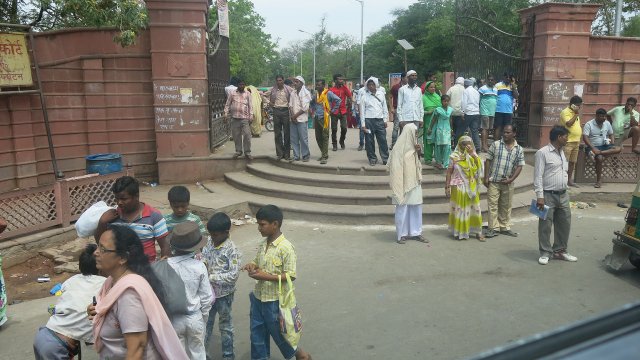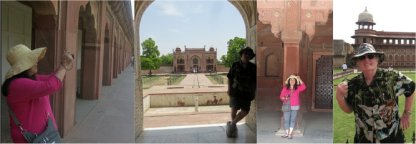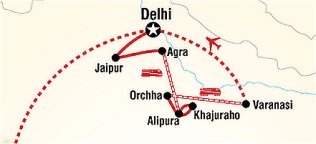Our local guide Shef left us after Fort Agra.
Parakrum took us to Baby Taj, which was built by the Raj's favourite wife
when her father died. It is like the Taj but the dome is like a jewel box.
The Raj's mother-in-law is also buried there as well as his own parents.
It only took seven years to build, but not as impressive after seeing the
actual Taj Mahal!
It was a very long day of walking in the +40 degree
heat, but we got it all done. The Taj Mahal grounds were being closed in
the early afternoon as the Duke and Duchess of Cambridge were due to visit
the site at 5:30 pm. We saw many police cars with sirens on, carrying more
security into the area. As mentioned before, there was also a carnival-like
atmosphere as they were celebrating the end of a nine-day festival of some
kind. The worshippers have all their idols in glittery "floats" carrying
them to a central location for the celebration. There were SO many buses
loaded, REALLY loaded with people coming in for this celebration. Parakrum
(our CEO) wanted to make sure we got back to our hotel before the traffic
got worse.
Tomb of I'timad-ud-Daulah
is a Mughal mausoleum in the city of Agrah. Often described as a "jewel
box", sometimes called the "Baby Taj", this tomb regarded as a draft
of the Taj Mahal.
Along with the main building, the structure consists
of numerous outbuildings and gardens. The tomb, built between 1622 and
1628 is primarily built from red sandstone with marble decorations with
its second phase, based on white marble and pietra dura inlay, most elegantly
realized in the Taj Mahal.
The mausoleum was commissioned by Nur Jahan, the wife
of Jahangir, for her father Mirza Ghiyas Beg, originally a Persian Amir
in exile, who had been given the title of "pillar of the state." He was
also the grandfather of Mumtaz Mahal, the wife of the emperor Shah Jahan.
Located on the right bank of the Yamuna River, the
mausoleum is set in a large cruciform garden criss-crossed by water courses
and walkways. The mausoleum itself covers about twenty-three meters square,
and is built on a base about fifty meters square and about one meter high.
On each corner are hexagonal towers, about thirteen meters tall.
The walls are made up from white marble from Rajasthan
encrusted with semi-precious stone decorations – cornelian, jasper, lapis
lazuli, onyx, and topaz formed into images of cypress trees and wine bottles,
or more elaborate decorations like cut fruit or vases containing bouquets.
Light penetrates to the interior through delicate jali screens of intricately
carved white marble. The interior decoration is considered by many to have
inspired that of the Taj Mahal, which was built by her stepson, Mughal
emperor Shah Jahan.
Many of Nur Jahan's relatives are interred in the mausoleum.
The only asymmetrical element of the entire complex is that the cenotaphs
of her father and mother have been set side-by-side, a formation replicated
in the Taj Mahal.
